Detroit music youtube blitz
 By Susan Whitall – From her Blog at DetNews.com
By Susan Whitall – From her Blog at DetNews.com
Happy news, the Rationals are playing a CD release party July 24 at the Magic Bag.
Detroit’s Favorite Pitchmen
The death of TV pitchman Billy Mays, jogged memories of some of the more notable on-sit sales people of the Keener era.
Marilyn Turner was the weather person at WJBK when she began her run as the spokesmodel for Carpet Center. We remember her flying through the warehouse on a Persian rug. And who can forget the inspired series of radio commercials for Merollis Chevrolet where salesman Ernie was constantly getting advice from the owner who “made a friend for life with each car sold”.
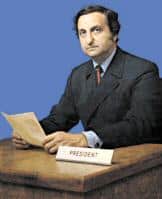 Perhaps the most famous Detroit advertising icon was Mr. Belvedere. The man behind the president’s desk who ended each commercial with the phrase “we do good work” was actually Maurice Lezell. A Detroit native and graduate of Central High school, Lezell named his construction company after the Clifton Webb character that first garnered attention in the 1948 film Sitting Pretty. According to Detroit’s most knowledgeable TV historian, Ed Golick, proprietor of the quintessential Motor City television memory site DetroitKidShow.com, by the 1970s Belvedere Construction became one of the biggest local advertisers in Detroit, spending a reported $750,000 a year.
Perhaps the most famous Detroit advertising icon was Mr. Belvedere. The man behind the president’s desk who ended each commercial with the phrase “we do good work” was actually Maurice Lezell. A Detroit native and graduate of Central High school, Lezell named his construction company after the Clifton Webb character that first garnered attention in the 1948 film Sitting Pretty. According to Detroit’s most knowledgeable TV historian, Ed Golick, proprietor of the quintessential Motor City television memory site DetroitKidShow.com, by the 1970s Belvedere Construction became one of the biggest local advertisers in Detroit, spending a reported $750,000 a year.
Many of us remember Mr. Belvedere’s repartee with CKLW-TV’s Conrad Patrick and Lezell’s scowling “Conrad, I’m not happy!” statements. Lezell told Ed Golick that the commercials were an incredible two minutes in length and were recorded extemporaneously.
For more on Lezell’s life as Mr. Belevedere, visit the DetroitKidShow Belevedere page.
Lost in the mix…Sky Saxon RIP
 By Susan Whitall – From her Blog at DetNews.com
By Susan Whitall – From her Blog at DetNews.com
Everybody talks about celebrity deaths coming in threes — in this case it would be Ed McMahon, Farrah Fawcett then Michael Jackson — but it’s also a truism that many notable deaths get lost in the shuffle.
Sky Saxon died Thursday as well, cause of death not yet official. He didn’t have the fame of Michael Jackson, but he led the Seeds, who, with “Pushin’ Too Hard” were one of the key garage bands of the late ’60s. The Seeds on the surface were one-hit wonders, but that hit had so much impact on generations of bands, and fans that it’s hard to measure.
Saxon had recently moved to Austin and was set to be a part of the California ’66 tour along with remnants of Love and the Electric Prunes.
Curator’s note: The Video link in Susan’s blog post came from an episode of “The Mothers In Law” an NBC TV series, starring Eve Arden and Kay Ballard, that ran on WWJ (now WDIV) TV from 1967-1969. Rock groups were often featured on TV series in the 60s. Perhaps the strangest appearance was when the Beau Brummels traveled back in time to sing “Laugh Laugh” on The Flintstones.
Michael Jackson’s place in the pantheon of our lives
By Scott Westerman
 I was in Tucson yesterday when the cell phone beeped that Michael Jackson had suffered cardiac arrest. As the day progressed, and my team was jumping on a plane back to ABQ it became clear that a troubled life was over and that another page in rock n roll history had turned.
I was in Tucson yesterday when the cell phone beeped that Michael Jackson had suffered cardiac arrest. As the day progressed, and my team was jumping on a plane back to ABQ it became clear that a troubled life was over and that another page in rock n roll history had turned.
Ryan Seacrest’s Audio Tribute to Michael Jackson
Link: Susan Whitall’s excellent MJ Piece in the Detroit News.
Thanks to my friend Don Davis, I get to channel my Keener creative juices from time to time on a small AM oldies station here in New Mexico. I called the Queen when we landed and had her meet me at the studios with her Jackson Five CD collection. We went on the air at 7PM to spend an hour pondering MJ’s impact on the Keener generation.
I am a huge Motown fan, and in 1969, it felt to me like the Jackson 5 were carpetbaggers, stealing the thunder of what I though was authentic R&B. But it was hard not to like “I Want You Back” and “The Love You Save” and I was soon adding those to the cassette music mixes that played in my car on the way to school.
The Jackson 5 charted 8 times on the WKNR. Michael did it only once as a solo artist with “Got to Be There”. There’s no doubt that, had Keener survived into the 80s, he would have been a staple on the play list even then.
How to talk about MJ to an audience that was more attuned to Elvis and the Beatles? We were working without notes last night and putting together the show on the fly. I decided to focus on early Motown’s influence on later Motown.. Juxtaposing the Temptations “Can’t Get Next to You” with “ABC” and Bobby Day’s version of “Rockin Robin” against MJs (the original is infinitely better).
I put the Queen on the air (against her will) and asked about her first Jackson Five 45. That lead to a conversation about how our older siblings influenced our musical tastes… and visa versa.
We played “Thriller“.. Had to. 50 million in sales and the first African American music video to break on MTV made it so.
Touched only lightly on MJ’s troubled life and eccentricities. There are inevitable comparisons to Elvis. They both died young and the combination of lifestyle and medication probably were contributors to each man’s demise. No matter who you most identify with, the King of Rock and Roll and the King of Pop each made indelible marks on their times.
We wound things up with a review of MJ’s philanthropies. Talked about but didn’t play “We Are the World“. Ended with “Man in the Mirror” with a set up about how complicated we are as human beings, capable at our core of incredible good, if we will it so.
KRKE program director Craig Collins and I joke that Real Oldies 1600 runs on Triple A Battery power after dark and since very few listeners called our live line during the show, Colleen and I wondered who was really out there paying attention. But the experience brought back memories of how she used to come to the studio with me when we were first married. And we were grateful, again, that we still love each other as much today as we did on those nights at the radio station over 30 years ago.
After the show, we went into the production room and played “Rock with You” and “Don’t Stop Till You Get Enough”, two of her all time MJ favorites. We remembered taking my record hop stuff to her family holiday gatherings and how everyone played DJ while the rest of us danced to stuff like that.
And we thought, as we were driving home, that perhaps when stars die, we should focus on those types of memories… where we were, what we were doing and who was most important in our world when these records were playing the sound track of our lives.
First 45 and Favorite 45?
Our post about the birthday of the LP elicited some great feedback on Facebook. I asked for the name of the first LP you ever bought. I got a lot of great answers, including one from Mike Smock, who said, “LP’s? how about 45’s? – CCR – Down on the Corner/Fortunate Son.”
That spurred me to open one of the many, many boxes of 45s that have sat, untouched, in my garage over the last three moves. What a wave of memories that generated!
 So what was your first 45 purchase ever? And how about your favorite 45 of all time?
So what was your first 45 purchase ever? And how about your favorite 45 of all time?
The first 45 I bought was Chubby Checker‘s “Limbo Rock”. It wasn’t what I had intended to buy. I knew what the song I wanted sounded like, but didn’t know the title, so, being just seven years old, I picked the 45 that looked like the most likely candidate. Of course I was wrong.
Favorite 45? There are three that I still cherish as much as the day I bought them.
 Free – All Right Now: This was a DJ record that came with two mixes, a short and long version. The guitar bridge before the final chorus pans from left to right and back again in a call-and-response that builds to and explosive climax. When my buddy John Schumacher bought the album, I thought I’d get it, too. But I discovered that the album version was a total re-record and had none of the punch of the single. Sadly the album mix is all that we hear now days and generations assume it’s the real deal. Look deep at the Free catalog over at Rhapsody and you may find the original single version.
Free – All Right Now: This was a DJ record that came with two mixes, a short and long version. The guitar bridge before the final chorus pans from left to right and back again in a call-and-response that builds to and explosive climax. When my buddy John Schumacher bought the album, I thought I’d get it, too. But I discovered that the album version was a total re-record and had none of the punch of the single. Sadly the album mix is all that we hear now days and generations assume it’s the real deal. Look deep at the Free catalog over at Rhapsody and you may find the original single version.
 B.J. Thomas – Rock n Roll Lullabye: Another DJ record with two versions. The Beach Boy background vocals are dead-on and the stereo mix is head-phone perfect. The long version has a 35 second intro with Fender Rhodes and vibes that is un-paralleled. I actually had two copies and wore out one of em, listening through my David Clarks on the good old Sony stereo in our living room.
B.J. Thomas – Rock n Roll Lullabye: Another DJ record with two versions. The Beach Boy background vocals are dead-on and the stereo mix is head-phone perfect. The long version has a 35 second intro with Fender Rhodes and vibes that is un-paralleled. I actually had two copies and wore out one of em, listening through my David Clarks on the good old Sony stereo in our living room.
 Everything is Everything – Wichi-Tai-To: Jim Pepper, the Native American sax player who is behind the band Everything is Everything was the inspiration for this one hit peyote laced wonder on the Vanguard label. It’s a mono mix and didn’t do much on the charts, but it inspired a ton of others to record it, including an extended riff on the Brewer and Shipley Weeds LP. I did an Internet search a few years back and found eleven different versions, from jazz fusion to the Harpers Bizzare.
Everything is Everything – Wichi-Tai-To: Jim Pepper, the Native American sax player who is behind the band Everything is Everything was the inspiration for this one hit peyote laced wonder on the Vanguard label. It’s a mono mix and didn’t do much on the charts, but it inspired a ton of others to record it, including an extended riff on the Brewer and Shipley Weeds LP. I did an Internet search a few years back and found eleven different versions, from jazz fusion to the Harpers Bizzare.
Got a first 45 / favorite 45 recollection? Share it with us!
Ed McMahon
From 1974. The late great Carson sidekick (March 6, 1923 – June 23, 2009) at his second banana best. Johnny’s network was in a slump in the mid 70s. ABC was in it’s prime and Carson wasn’t afraid to take pot shots at his bosses… and the competition. The local NBC news team was was in the audience, hence the inside jokes.
Ed McMahon passed away this week after a battle with bone cancer.
Mama is taking our Kodachrome away
Kodak announces that it will no longer make it’s famed Kodachrome film. Let’s remember with Paul Simon.
Happy Birthday to the LP!
 On June 21, 1948. Columbia Records revolutionized recorded music with the introduction of Long Play record albums. The LP was the brain child of a group of engineers, lead by Hungarian born inventor Peter Goldmark, who became obsessed with finding a way to cram more content onto the circular disks that were the current state of the art in analog sound reproduction.
On June 21, 1948. Columbia Records revolutionized recorded music with the introduction of Long Play record albums. The LP was the brain child of a group of engineers, lead by Hungarian born inventor Peter Goldmark, who became obsessed with finding a way to cram more content onto the circular disks that were the current state of the art in analog sound reproduction.
Before 1948, records spun at 78 revolutions per minute and could hold only about 4 minutes per side. The LP changed all that. Initially a disk could hold a total of 45 minutes (about 22 minutes per side) of monaural content. Over the next 40 years, improvements in quality and capacity lead to Extended Play disks that contained 52 minutes, and the audio output grew from one track to two-track stereo and ultimately four-track quadraphonic. LPs were at first available in both 10 and 12 inch varieties, with Frank Sinatra and the New York Philharmonic listed as catalog numbers one and two. The 10 inch disk soon lost out to the higher capacity 12 inch version, which became the standard for a generation of audiophiles until the advent of the Compact Disk.
Each side of an LP contains nearly sixteen hundred feet of groove. At 33 1/3 revolutions per minute, the playback needle travels along the grooves at about one mile per hour. Unlike CDs which change the speed of rotation to deliver a constant data stream, a record player needle travels fastest at the outside edge of the LP.
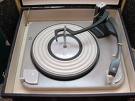 Many of us owned players with four speed settings: 16, 33 1/3, 45 and 78 RPM, with thirty-threes and forty-fives being the most popular denominations. Often, we would test the waters of a new act by buying a 45 “single”. If we liked it, we might pop for the LP.
Many of us owned players with four speed settings: 16, 33 1/3, 45 and 78 RPM, with thirty-threes and forty-fives being the most popular denominations. Often, we would test the waters of a new act by buying a 45 “single”. If we liked it, we might pop for the LP.
The longer playing format lead artists to consider how tracks flowed on a side. The Beatles, Stevie Wonder and Pink Floyd made the most of the Symphonic approach to album creation. Unless we were watching the visual separation of each album band, it was sometimes hard for us to figure out where one song ended and the next began.
The 12 x 12 inch size opened up a whole new world to record company marketing departments, who used LP cover art as a way to define an artist’s brand and set a disk apart from the rest on record store shelves.
Some still believe that LPs are superior in audio quality to digital CDs. Club DJs often prefer vinyl to digital as they ply their trade scratching and cross fading tracks to influence the intensity on the dance floor.
 As for Peter Goldmark, he went on to champion the CBS system for color television broadcasting. It was far superior to the RCA NTSC color system, but wasn’t compatible with the millions of black and white TV sets already in use and RCA’s iteration became ubiquitous.
As for Peter Goldmark, he went on to champion the CBS system for color television broadcasting. It was far superior to the RCA NTSC color system, but wasn’t compatible with the millions of black and white TV sets already in use and RCA’s iteration became ubiquitous.
Bobby Hebb
 Bobby Hebb’s one hit wonder, “Sunny” was entering it’s second week at number one on the WKNR Music Guide on this date in 1966. Only the second African American to perform on the Grand Ole Opry, Hebb was the son of blind musicians. His career began at age three when he teamed with his nine year old brother, Harold. He later becasme a regular on the Opry playing in Roy Acuff’s band. Hebb played trumpet in the Navy and became the second “Mickey” when Mickey Baker left the musical team of Mickey and Sylvia.
Bobby Hebb’s one hit wonder, “Sunny” was entering it’s second week at number one on the WKNR Music Guide on this date in 1966. Only the second African American to perform on the Grand Ole Opry, Hebb was the son of blind musicians. His career began at age three when he teamed with his nine year old brother, Harold. He later becasme a regular on the Opry playing in Roy Acuff’s band. Hebb played trumpet in the Navy and became the second “Mickey” when Mickey Baker left the musical team of Mickey and Sylvia.
On November 23, 1963, Harold Hebb was killed in a knife fight in Nashville. That event, along with the assasination of President John F. Kennedy threw Hebb into a funk. He used songwriting as therapy, eventually penning “Sunny” as an alternative to Johnny Bragg’s “Just Walkin in the Rain.”
 “Sunny” was a smash hit, leading to a tour with the Beatles. Bootleg recordings of the concerts show the audience receiving Hebb with the same wild enthusiasm shown for John, Paul, George and Ringo. The All Music Guide shows over 1000 different releases of the song. In it’s day, the tune was covered more than one hundred times by everyone from Cher to James Brown to Frank Sinatra. Eleven years later, a disco remix put Hebb back on the charts.
“Sunny” was a smash hit, leading to a tour with the Beatles. Bootleg recordings of the concerts show the audience receiving Hebb with the same wild enthusiasm shown for John, Paul, George and Ringo. The All Music Guide shows over 1000 different releases of the song. In it’s day, the tune was covered more than one hundred times by everyone from Cher to James Brown to Frank Sinatra. Eleven years later, a disco remix put Hebb back on the charts.
Some Keener Trivia: the four note hook just before the key change in “Sunny” was lifted from John Barry’s famous James Bond theme, made popular in the film Dr. No.
Music retail…will you miss it?
 By Susan Whitall – From her Blog at DetNews.com
By Susan Whitall – From her Blog at DetNews.com
Everybody has a different memory, when it comes to buying music at a bricks and mortar store, and the closing of the Virgin mega store in New York, one of two Virgin mega stores left in the U.S. (the other, in Hollywood, is also about to close) has led to many folks exchanging their favorite retail memories like Scott did here on Keener13.com.
 I can’t say any one chain had a hold on my heart; I remember pining for and finally convincing my mother to buy Stevie Wonder’s “Fingertips Part II,” the Motown single, at for me at the Kresge’s 5 & 10 in downtown Birmingham as a nipper. (The pic at left is a shot of the Downtown Kresge’s in the 60s – Curator) I wouldn’t have known what a record store was, back then.
I can’t say any one chain had a hold on my heart; I remember pining for and finally convincing my mother to buy Stevie Wonder’s “Fingertips Part II,” the Motown single, at for me at the Kresge’s 5 & 10 in downtown Birmingham as a nipper. (The pic at left is a shot of the Downtown Kresge’s in the 60s – Curator) I wouldn’t have known what a record store was, back then.
More often than not, I bought 45s and 33s at such places; I remember forking over $3 or so for Jimi Hendrix’s “Are You Experienced?” at Perry Drugs, to the elderly male cashier’s disdain. (“What are you going to torture your parents with now?” he said).
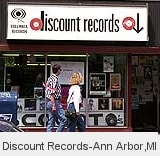 I do remember standing in line at Discount Records for a Beatles album, probably “Abbey Road.”
I do remember standing in line at Discount Records for a Beatles album, probably “Abbey Road.”
At Michigan State I once traded in a few textbooks for a copy of the Beatles’ White Album, an unexplained gap in my Beatles collection. It was a lucky break for me that the Student Bookstore carried records…
My favorite record store for years was the late, lamented Sam’s Jams in Ferndale, because it carried the more unusual stuff. I remember finding “Gino is a Coward” and some other vintage R&B, racked as oldies, at Sam’s. Never would you find anything that different at the chain stores. Today my only music retail stop is Street Corner Records at 13 and Southfield. (I hear they’re moving to Greenfield Plaza in Oak Park, but at least they’re still alive.) What’s your music retail favorite, or memory?
(June 20, 2009)
I forgot to mention E.J. Korvettes, a defunct discount emporium here in Michigan, as another place where I would top up my album collection. As a staffer at Creem Magazine in the ’70s I usually didn’t need to buy much, but I remember getting a slew of Jeff Beck albums there for about $3.00 each.
This was before the advent of $18 CDs pretty much destroyed the business model.
Most intriguingly, blogger (and keener13.com fan) Chris Morton of Floydian Slips,who also grew up near Birmingham, Mich., jump-started my memory bank when he mentioned a tiny drugstore on the northeast corner of Maple & Woodward Ave. in Birmingham. On the southeast corner sat Cunningham’s Drugstore, where I don’t recall buying any records, just music and fashion magazines.
Eureka! In the basement of this place on the NE corner (which I believe was called AAA Discount Drugs, although Chris isn’t so sure), in a dank little basement was a wonderland packed with 100s of 45s and 33s. As kids we would go down a narrow stairway and paw through the latest hits under garish lighting.
If anyone can help us with the name of this place that started so many on the road to music retail ruin, please do tell.
Susan Whitall writes about music, books, pop culture, radio and more for The Detroit News. You can reach her at swhitall@detnews.com.
Classic Ventures
the Ventures remain the most popular instrumental act of all time and one of the most popular bands ever in Japan. They charted five times on Keener with tunes like “Slaughter on 10th Avenue”, “Secret Agent Man”, “Fugitive” and the classics “Walk, Don’t Run” and “Hawaii Five-0”.
Many consider them a surf-rock band, but their music predated the genre and they never defined themselves as such.
When one of the founding members, Bob Bogle, passed away this week, we broke out “Walk, Don’t Run” and “Hawaii Five-0” and turned up the volume. Here’s video from their 2008 induction into the Rock n Roll Hall of Fame.
Closing of the last mega buggy whip store
By Scott Westerman
 “The closing of the last mega buggy whip store”. That’s the header of an email we received from our good friend John Kajander about the final days of the Virgin’s Mega-store in NYC. He included this link to Ben Sisario’s NYT story about the demise of the retail record business.
“The closing of the last mega buggy whip store”. That’s the header of an email we received from our good friend John Kajander about the final days of the Virgin’s Mega-store in NYC. He included this link to Ben Sisario’s NYT story about the demise of the retail record business.
We all remember buying our black vinyl at Harmony House, E.J. Korvettes, Hudsons and Discount Records back in the day. And more than one Keenerfan has written us over the years wondering if the decline of the record industry truly began when CDs marginalized the power of album art.
When LPs ruled the world, artists were defined and sometimes diminished by how they branded themselves on their album covers. Here are a few of our faves.
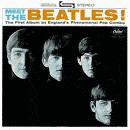 Meet The Beatles:
Meet The Beatles:
The quintessential debut album from the 60s. Often imitated in family photos, too. I remember seeing something almost identical with four members of a family in black and white. Capitol gutted the EMI British release to be able to create a US-only Second Album and the tracks included both Beatle originals and standards (remember Paul singing “Till There Was You” from the Music Man?) In our neighborhood, one of the boys holding a cigarette (on the back of the album) was a scandal.
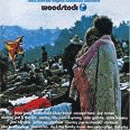 Woodstock
Woodstock
Perhaps the first double LP that many of us bought. Those who were there say that the cover gave a good vibe for the mixture of emotional highs and lows associated with the concert that got out of hand. The album, and the film made superstars out of then lesser known acts like Sha-Na-Na and Richie Havens and elevated Joe Cocker, Ten Years After and Santana to new heights. In the “what were they thinking” department, the managers for Creedence Clearwater Revival and the Grateful Dead refused to let their clients appear in the film. It wasn’t until this year that their footage, along with performance by Mountain and Johnny Winter found eyeballs on the blu-ray DVD edition.
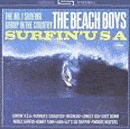 The Beach Boys – Surfin USA
The Beach Boys – Surfin USA
Growing up in Detroit, many of us had never seen one of those trademark 20 footers. The album photograph made it look much, much bigger. This record holds the distinction of being the first Beach Boys LP released in Stereo, although Brian Wilson didn’t participate in the original stereo mix downs. Chuck Britz, a Capitol records engineer, did the work. Prior Beach Boys collections were released in mono and something called Duophonic, where the voices were in one channel and the instrumentation in another. The late CD collections feature much better stereo mixes that give a feel for the full depth of Brian’s genius.
 Pink Floyd – Dark Side of the Moon
Pink Floyd – Dark Side of the Moon
The prism itself became the group’s trademark and the album went on to be one of the longest running Hot 100 LPs in Billboard history. Dark Side of the Moon was a one of those LPs that we used to let track all the way through during homework, to augment the effect of the mind-bending chemistry of the day, or as we tried our best to consummate our current romantic intentions. Whatever radio station you listened to in the early 70s probably used the instrumental vamp from “Breath” as the bed for whatever contest they were promoting at the time. Chicago radio fans will well remember it as the background for WCFL’s “Last Contest.”
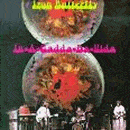 Iron Butterfly – In-A-Gadda-Da-Vida
Iron Butterfly – In-A-Gadda-Da-Vida
Every drummer who came of age in the 60s remembers Ron Bushy’s drum solo displacing “Wipe Out” as the definition of percussive chops. The story goes that the title was keyboard player Doug Ingle’s alcoholic mispronunciation of “In The Garden of Eden”. That’s a 17 year old former violin prodigy Erik Bann breaking psychedelic ground on guitar. Along with Led Zeppelin’s “Stairway to Heaven” and Elton John’s “Funeral for a Friend”, In-A-Gadda-Da-Vida was a DJ favorite, whenever we needed an uninterrupted 17 minutes to catch up on our homework.
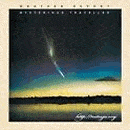 Weather Report – Mysterious Traveler
Weather Report – Mysterious Traveler
Back when I was at Michigan State University, we had a poster of this album cover in the lobby of our student radio station. I had never heard of Weather Report, but that poster alone made me want to buy the LP.
Times change. The paradigm of how to earn a living as a musical artist is more about merchandising and concertizing than it is about selling CDs and LPs. And there’s an interesting postscript to this inevitable evolution. If you kept your record collection in good condition, you might just be able to sell your albums on EBay.. as art, something that could end up in a frame in someone’s living room.
Comments:
Andru Reeve at 4:44pm June 15 on Facebook
Thankfully, we still have two great chains out here — Amoeba and Rasputin’s. Both operate under a different business model than Virgin and Tower did, so I think they’ll both be in business for awhile; they’re both always packed with customers who BUY stuff. Both stores sell an abundance of used product — CDs, DVDs, LPs. They appeal to both the music novice and the heavy collector. They don’t price things at LIST PRICE the way the two defunct chains did. Deep, deep discounts on new CDs. Also, they have web presence and, I believe, MP3 sales. Both chains have HUGE inventories, too. But … perhaps the most important thing is LOCATION; the stores all tend to be in population hubs that service up to a million folks. The stores are near busy highways and NOT in malls.
Scott Hanley at 5:24pm June 15 on Facebook
Hard to fit much artwork on a thumb drive…nice memories, Scott. And what of all those green sleeve 45’s for those of us in the radio biz….
Laura Smigielski Garcia at 7:02pm June 15 on Facebook
Do you remember when Peaches opened in Dearborn in mid 70s? That was the COOLEST record store ever. The lines to get in went clear around the bldg when they opened. Now we just have to be happy with itunes, I guess.
Dale Leslie at 9:03pm June 15 on Facebook
Personally, I preferred the Liberty Music Shop in Ann Arbor whose owner made a sensible decision when he relocated: he moved two blocks east on Liberty Street. Such atmosphere: the year-around screen door; the Gulf no-pest strips; the clerk whose breath was so putrid, the kids tipped her over on Halloween and remember?, every album jacket was empty (no kidding) because they stored the vinyl originals behind the cash-out counter. Brilliant!
Gary Mescher at 820pm June 16
You just had to drag me down memory lane at this late hour. Interesting insights as usual. I recall the Weather Report poster for the Heavy Weather album tacked on a wall in one of the WMSN studios around 1974. I still have all my college albums – having sold my baseball cards in 1980 (for $400) I am NOT going to see these memories from college days. I suspect there is some validity to the speculation that the down sizing of album art via the introduction of CD music technology did something to speed the demise of the album.
Chris Morton on June 17
We started buying LPs in the basement of B’hams’ Cunningham Drugs until Discount Records appeared in town. Soon a couple of us rabid (sic) collectors were buying a mix of LPs by the box, getting an additional discount for volume purchasing. Ten-plus years later, I looked forward to a yearly visit to Sam’s Jams, again spending hours and hours and buying boxes of LPs. Today all of that, and much, much more, sits on my media server. But yeah, I sure do miss the art!

